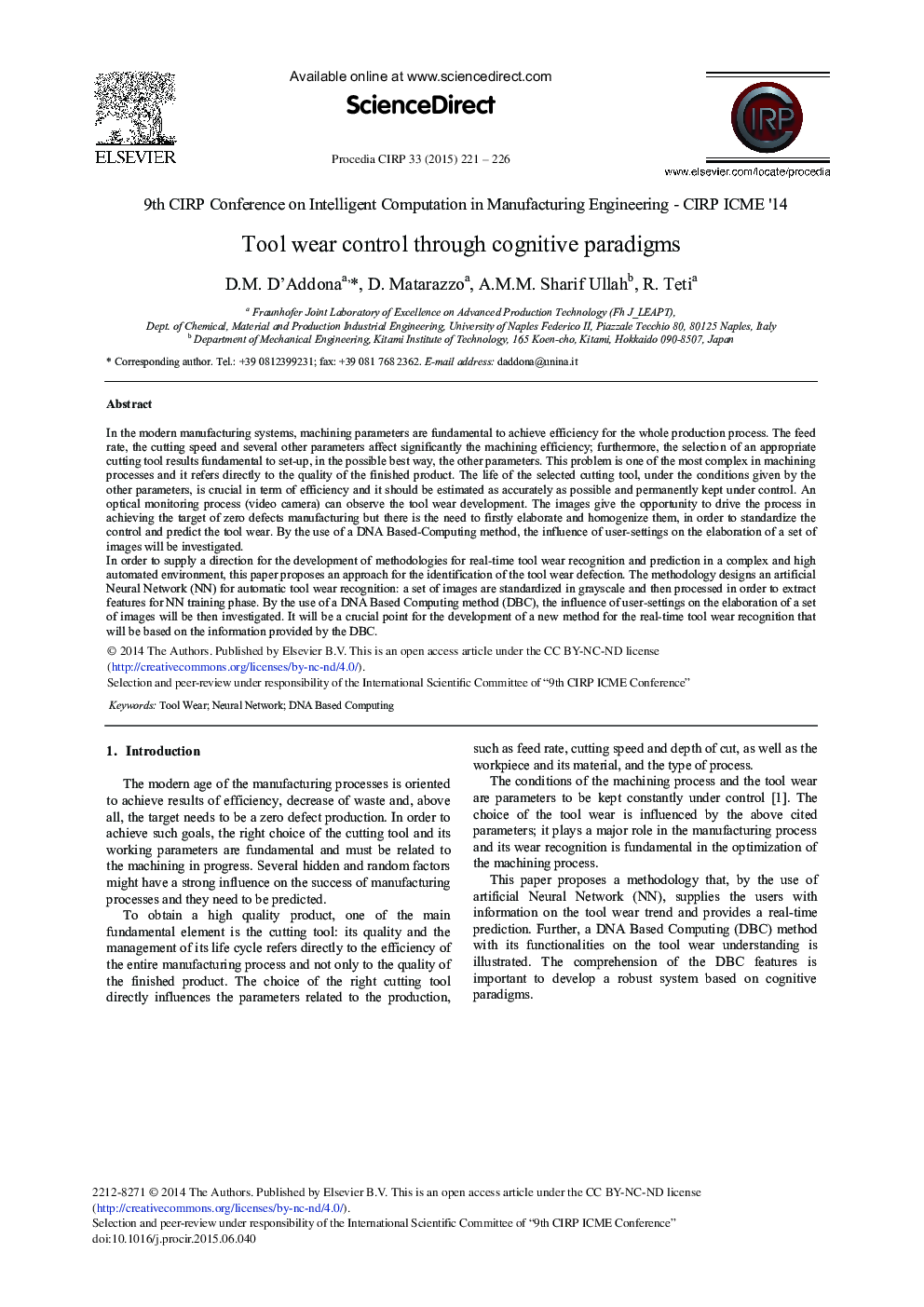| Article ID | Journal | Published Year | Pages | File Type |
|---|---|---|---|---|
| 1699319 | Procedia CIRP | 2015 | 6 Pages |
In the modern manufacturing systems, machining parameters are fundamental to achieve efficiency for the whole production process. The feed rate, the cutting speed and several other parameters affect significantly the machining efficiency; furthermore, the selection of an appropriate cutting tool results fundamental to set-up, in the possible best way, the other parameters. This problem is one of the most complex in machining processes and it refers directly to the quality of the finished product. The life of the selected cutting tool, under the conditions given by the other parameters, is crucial in term of efficiency and it should be estimated as accurately as possible and permanently kept under control. An optical monitoring process (video camera) can observe the tool wear development. The images give the opportunity to drive the process in achieving the target of zero defects manufacturing but there is the need to firstly elaborate and homogenize them, in order to standardize the control and predict the tool wear. By the use of a DNA Based-Computing method, the influence of user-settings on the elaboration of a set of images will be investigated.In order to supply a direction for the development of methodologies for real-time tool wear recognition and prediction in a complex and high automated environment, this paper proposes an approach for the identification of the tool wear defection. The methodology designs an artificial Neural Network (NN) for automatic tool wear recognition: a set of images are standardized in grayscale and then processed in order to extract features for NN training phase. By the use of a DNA Based Computing method (DBC), the influence of user-settings on the elaboration of a set of images will be then investigated. It will be a crucial point for the development of a new method for the real-time tool wear recognition that will be based on the information provided by the DBC.
